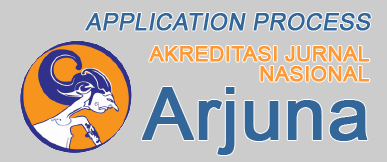Exploring Two Years of Stunting Trends: Insights from Tidore Kepulauan
DOI:
https://doi.org/10.62394/scientia.v3i1.88Keywords:
tidore kepulauan, stunting trends, child development, public health interventionsAbstract
Stunting, as a complex issue, demands a serious and comprehensive approach. Accelerating efforts to reduce stunting is imperative and requires collaboration from all stakeholders, including the Tidore government, private sector, community, and families. Furthermore, addressing this issue necessitates extensive longitudinal research to investigate its prevalence and influencing factors. To tackle this, a crucial study is essential to unveil the prevalence trends of stunting from 2022 to 2023, covering the last two years in the Tidore Kepulauan. The primary goal of this research is to provide a comprehensive overview of stunting trends in Tidore through long-term analysis, exploring prevalence fluctuations. Employing a descriptive statistical approach, this study relies on numerical data as its primary foundation, focusing on in-depth descriptive analysis of stunting prevalence trends in the Tidore Kepulauan over the last two years. Data from the Directorate General of Regional Development's website reveals significant variations among villages in 2022. Villages like Gurabati (1.2%), Toloa (2.1%), and Maregam (3.8%) exhibit low rates, whereas Topo (45.5%), Topo Tiga (23.1%), and Maitara Tengah (20.6%) have high rates. Specific efforts are needed in high-prevalence villages to improve child nutrition and overall community well-being. The 2023 prevalence data shows significant variations among villages, with some areas displaying alarmingly high rates. Descriptive statistical analysis links stunting in the Tidore Kepulauan to several key factors. Malnutrition (32.4%), inadequate nutritional intake, and prenatal malnutrition (28.2%) are major contributors. Genetic factors (16.2%), poor hygiene (4.8%), and viral/bacterial infections (4.1%) also play roles. Lower economic levels and other factors contribute in smaller proportions (2.8% and 3.0% respectively). Although 8.5% of respondents are unaware of the causes, this analysis provides a comprehensive overview of factors that need attention to combat stunting in the Tidore Kepulauan.
Downloads
References
Arikpo, D., Edet, E. S., Chibuzor, M. T., Odey, F., & Caldwell, D. M. (2018). Educational interventions for improving primary caregiver complementary feeding practices for children aged 24 months and under. Cochrane Database of Systematic Reviews, 5.
Bain, L. E., Awah, P. K., Geraldine, N., Kindong, N. P., Siga, Y., Bernard, N., & Tanjeko, A. T. (2013). Malnutrition in Sub–Saharan Africa: burden, causes and prospects. Pan African Medical Journal, 15(1).
Brearley, G., Rhodes, J., Bradley, A., Baxter, G., Seabrook, L., Lunney, D., Liu, Y., & McAlpine, C. (2013). Wildlife disease prevalence in human‐modified landscapes. Biological Reviews, 88(2), 427–442.
Brownson, R. C., Baker, E. A., Deshpande, A. D., & Gillespie, K. N. (2018). Evidence-based public health. Oxford university press.
Chegini, Z., Jafari‐Koshki, T., Kheiri, M., Behforoz, A., Aliyari, S., Mitra, U., & Islam, S. M. S. (2020). Missed nursing care and related factors in Iranian hospitals: A cross‐sectional survey. Journal of Nursing Management, 28(8), 2205–2215.
Engle, P. L., Castle, S., & Menon, P. (1996). Child development: Vulnerability and resilience. Social Science & Medicine, 43(5), 621–635.
Fram, M. S., Frongillo, E. A., Jones, S. J., Williams, R. C., Burke, M. P., DeLoach, K. P., & Blake, C. E. (2011). Children are aware of food insecurity and take responsibility for managing food resources. The Journal of Nutrition, 141(6), 1114–1119.
Hasan, D. S., & Muhammad, S. (2023). Stunting in Focus: Unraveling the Trends and Prevalence Among Children in Maluku Utara Province (2019-2023). SCIENTIA: Journal of Multi Disciplinary Science, 2(2), 84–94.
Heesterbeek, H., Anderson, R. M., Andreasen, V., Bansal, S., De Angelis, D., Dye, C., Eames, K. T. D., Edmunds, W. J., Frost, S. D. W., & Funk, S. (2015). Modeling infectious disease dynamics in the complex landscape of global health. Science, 347(6227), aaa4339.
Imani, N. (2020). Stunting pada anak: kenali dan cegah sejak dini. Hijaz Pustaka Mandiri.
NIMH. (2024). What is Prevalence? https://www.nimh.nih.gov/health/statistics/what-is-prevalence
Nwosu, C. O., & Ataguba, J. E.-O. (2020). Explaining changes in wealth inequalities in child health: The case of stunting and wasting in Nigeria. Plos One, 15(9), e0238191.
Organization, W. H. (2013). Essential nutrition actions: improving maternal, newborn, infant and young child health and nutrition.
Prendergast, A. J., & Humphrey, J. H. (2014). The stunting syndrome in developing countries. Paediatrics and International Child Health, 34(4), 250–265.
Raiten, D. J., & Bremer, A. A. (2020). Exploring the nutritional ecology of stunting: new approaches to an old problem. Nutrients, 12(2), 371.
Ruel, M. T., & Alderman, H. (2013). Nutrition-sensitive interventions and programmes: how can they help to accelerate progress in improving maternal and child nutrition? The Lancet, 382(9891), 536–551.
Sangadji, Suwandi S., Febriyani E. Supriatin, Iin Marliana, Afkar, Andi Paerah, and Firdaus Y. Dharta. 2022. “Metodologi Penelitian.” OSF Preprints. July 5. osf.io/ywemh
Sanders, B. S. (1964). Measuring community health levels. American Journal of Public Health and the Nations Health, 54(7), 1063–1070.
Sanders, M. R., & Kirby, J. N. (2015). Surviving or thriving: Quality assurance mechanisms to promote innovation in the development of evidence-based parenting interventions. Prevention Science, 16, 421–431.
Siswati, T. (2018). Stunting Husada Mandiri. In Husada Mandiri Poltekkes Kemenkes Yogyakarta. Husada Mandiri. http://eprints.poltekkesjogja.ac.id/5206/2/buku stunting lengkap.pdf
Sitti Patimah, S. K. M. (2021). Stunting Mengancam Human Capital. Deepublish.
Sitti Patimah, S. K. M. (2023). Strategi Pencegahan Stunting Pada Usia Baduta (Bawah Dua Tahun). Deepublish.
Downloads
Published
How to Cite
Issue
Section
Most read articles by the same author(s)
- Diana Sukmawati Hasan, Suwandi S. Sangadji, Fundamentals in Crafting Research and Community Service Articles , SCIENTIA: Journal of Multi Disciplinary Science: Vol. 3 No. 1 (2024): January - June
- Diana Sukmawati Hasan, Sinta Muhammad, Stunting in Focus: Unraveling the Trends and Prevalence Among Children in Maluku Utara Province (2019-2023) , SCIENTIA: Journal of Multi Disciplinary Science: Vol. 2 No. 2 (2023): July - December




















